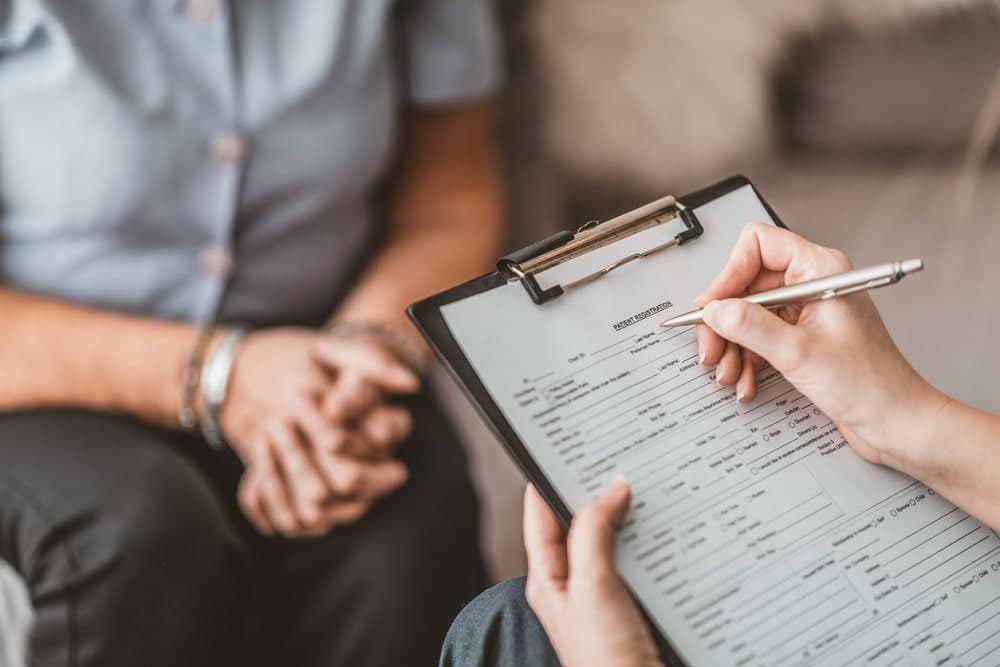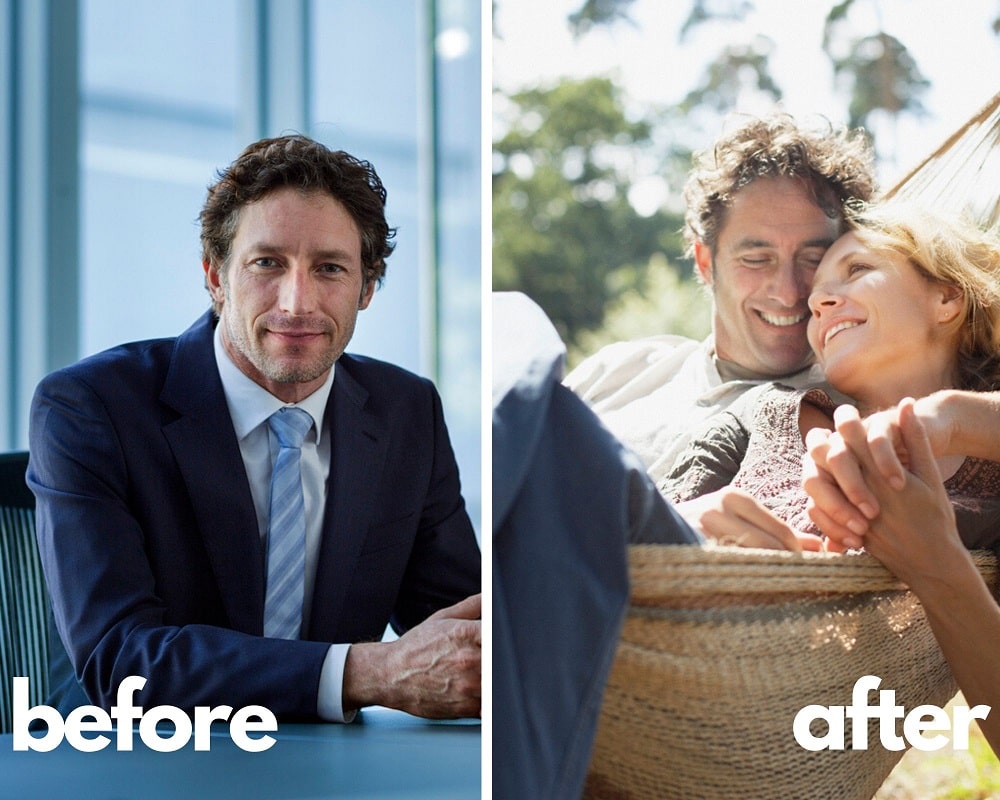Table of Contents
As men and women age, they often run into a situation where their bodies no longer produce enough testosterone to meet the requirements of the androgen receptors. When this situation occurs, they may experience signs and symptoms of low testosterone (Low T or hypogonadism). Doctor-prescribed low testosterone treatment is often the answer. In this review, we cover the many options available for increasing testosterone levels, including what to expect from receiving treatment in our hormone clinic.
When it comes to replenishing dwindling hormone levels, the best treatment is one customized to the individual’s needs. Hormone replacement therapy is NOT a one-size-fits-all type of treatment. No two people experience a hormonal decline in the same way. Even if the symptoms are similar, the level of deficiency, a person’s body composition (fat vs. lean muscle mass), health, gender, age, and other factors may require a different testosterone dosage or treatment approach.
For some individuals, low testosterone levels can be increased through some lifestyle changes. There are benefits to discovering a decline in testosterone production early – before symptoms set in and alter daily activities. For those in the beginning stages of testosterone decline, improvements to daily habits can help increase the amount of testosterone the body produces. We will cover these actions in the “ways to increase testosterone levels” section below.
Various options for low testosterone treatment for those requiring medical intervention also exist. Gender plays a significant role in determining the best form of testosterone replacement therapy (TRT). We will also highlight and explain in detail these options in the section “types, differences, and effects of low testosterone treatment” below.
It is also essential to understand that when left untreated, low testosterone levels can increase the risk of developing other medical conditions, including:
- Cardiovascular disease
- Atherosclerosis
- High blood pressure
- Anemia
- Type 2 diabetes
- Metabolic syndrome
- Obesity
- Dementia
- Infertility
Receiving the appropriate low testosterone treatment can help reduce the risk of developing conditions such as cardiovascular disease, type 2 diabetes, and dementia.
The Sense of Treatment
The body’s hormones are the chemical messengers that keep everything in working order. The balancing of these hormones is complex therapy. Every hormone has a purpose – some have many. These same essential chemicals often influence the secretion of other hormones – sometimes stimulating and increasing production and other times inhibiting their release into the bloodstream.
By increasing one hormone, it can also boost or decrease others, as is the case with low testosterone treatment. The body creates enzymes that seek out some of the testosterone in the bloodstream that is unattached to a protein for transport.
Unbound testosterone cannot move through the bloodstream. It needs the binding to either albumin or sex hormone-binding globulin (SHBG) since it is a fat, and blood is water-soluble. Fat-soluble hormones such as testosterone require the attachment to a protein for their transport. However, for it to be used by the body’s androgen receptors, testosterone must separate from the binding. At that time, the testosterone is “free” and available for use.
Unfortunately, some of that free testosterone is often converted by enzymes into either estradiol (estrogen) or dihydrotestosterone (DHT) for other uses. That can further lower testosterone levels while increasing estrogen and DHT.
A hormone specialist understands this situation, taking care to ensure that all three hormones remain in proper balance during low testosterone treatment. That brings the body back into a sense of balance from TRT. The last thing anyone wants is to correct one hormone only to find that one or two others are now out of balance and causing other problems.
Ways To Increase Testosterone Levels
The ways to treat Low T fall into two categories: natural and medication. Treating low testosterone levels naturally is easy for some people but more difficult for others. It often requires making changes in lifestyle habits, diet, sleep, and exercise. Not everyone is willing to make these changes. Some people prefer to ask for a “magic pill” to correct a situation that they do not want to deal with first-hand.
Unfortunately, low testosterone treatment is not as simple as popping a little pill. In fact, that is the last thing doctors would recommend as oral testosterone would go straight to the liver, where it would increase the risk of liver toxicity.
Let us look at the natural and medicinal ways to treat Low T:
Naturally
To boost testosterone production naturally, it is imperative first to ensure that daily habits do not hinder or impede testosterone release. Habits such as smoking, excessive alcohol consumption (more than a drink or two each day), high levels of stress, poor sleep, lack of exercise, and making the wrong dietary choices can all decrease testosterone production.
The best ways to increase testosterone naturally are:
- Getting between seven and nine hours of sleep each night which provides the body with the right amount of time for nocturnal testosterone release and usage
- Losing weight through proper nutrition and exercise as obesity increases the conversion of testosterone into estrogen, further lowering testosterone levels
- The right types of exercise, including both resistance and high-intensity interval training, can help with short-term increases in testosterone production (extended cardio sessions reduce testosterone secretion)
- Lowering stress is crucial as the stress hormone cortisol inhibits both sleep and testosterone production, while also increasing ghrelin hormone release which can lead to overeating and further weight gain
With Medications
Unfortunately, lifestyle changes do not always work, especially for people who have very low testosterone levels. At that time, low testosterone treatment in the form of hormone replacement therapy is often the best alternative. Testosterone medications come in various forms, as we will discuss in the next section.
Types, Differences, and Effects of Low Testosterone Treatment
Men and women have significant differences in the levels of testosterone in their bodies. Women have a higher estrogen to testosterone ration, while men have considerably more testosterone than estrogen. However, that does not negate the fact that everyone requires enough of a supply of both of these vital hormones to carry out the many functions they regulate and influence in the body.
For that reason, the type of low testosterone treatment prescribed for men and women will also differ. Most forms of TRT are too high in strength for female use. That is why our doctors prefer to use testosterone cream compounded to each woman’s needs by a specialized compounding pharmacy.
Testosterone replacement therapy options for men include:
Injections
The two most recommended forms of treating male hypogonadism are:
- Testosterone cypionate (Depo-Testosterone, Watson, generic/compounded):
- intramuscular injection administered once every 10 to 14 days for most men
- lowest cost of all forms of TRT
- most common side effect is injection site irritation
- fastest, most effective absorption into the bloodstream
- longest-lasting of all recommended forms of treatment by our doctors
- easy-to-administer at-home treatment
- Testosterone enanthate (Delatestryl, Watson, generic/compounded)
- intramuscular injection administered once every 5 to 7 days for most men
- next to lowest cost of all forms of TRT (behind testosterone cypionate)
- most frequently reported side effect is injection site irritation
- fastest, most effective absorption into the bloodstream
- second longest-lasting of all recommended forms of treatment by our doctors
- easy-to-administer at-home treatment
Our doctors do NOT recommend another type of injectable testosterone:
- Testosterone undecanoate (Aveed)
- intramuscular injection administered as two doses four weeks apart, then once every ten weeks after that
- extremely high in cost
- longest-lasting form of testosterone injection
- requires in-office administration due to the high risk of potential adverse reactions and breathing difficulty
Patches and Gels
Transdermal preparations apply to the skin, where the testosterone medication must then absorb through the skin’s layers into the bloodstream:
- Testosterone patches:
- once-daily application to clean, dry skin
- patch remains in place for 24 hours
- site rotation necessary to avoid skin reactions
- most common side effect is a rash or irritation
- very expensive to use
- may fall off which can lead to needing another patch, ineffective treatment, and even cross-contamination risk to another person who may inadvertently touch the patch
- unknown absorption rate which could reduce benefits
- helps maintain more stable testosterone levels
- Testosterone gel:
- once-daily application to clean, dry skin
- must allow the gel to dry before getting treated area wet
- most common side effect is a rash or irritation
- expensive to use
- possesses the most significant risk of cross-contamination to another person who may inadvertently come into contact with the treated skin – can be dangerous for women and children
- unknown absorption rate of the gel through the skin which could reduce benefits
- helps maintain more stable testosterone levels
- Testosterone nasal gel:
- three-times daily application into each nostril via a pump
- can feel messy or runny in the nose
- most common side effects include headaches, upper respiratory and nasopharyngeal symptoms
- expensive to use
Transbuccal Tablets
Transbuccal tablets adhere to the upper gum line in the mouth, allowing the testosterone to absorb through the gums into the bloodstream:
- place a new tablet twice a day
- very expensive to use
- can feel uncomfortable in the mouth
- side effects include oral irritation, bitter taste, risk of swallowing and liver toxicity
- better absorption into the bloodstream than patches or gels, but not as good as injections
Implantable Pellets
Small, rice-sized pellets are surgically implanted beneath the skin, often in the area of the buttocks:
- surgical implantation is very expensive
- outpatient procedure
- excellent absorption
- slow release into the bloodstream over a period of months
- longest-lasting treatment
- if pellets cause any adverse reactions, they are extremely difficult to remove
- the pellets could work their way out from under the skin surface, reducing effects and benefits and necessitating another procedure
Of all these methods of low testosterone treatment, our hormone specialists find that men get the best results using testosterone cypionate injections. Because some males do experience “lows” near the end of their cycle, the doctor may decide to prescribe a half-dosage on a more frequent basis, such as once a week. Until the treatment begins, it cannot be known if this alteration in the treatment is necessary.
The best options for low testosterone treatment are testosterone cypionate injections for men and testosterone cream for women.
More Facts About Low T Treatment
When considering low testosterone treatment, it is imperative to arm oneself with as much information as possible. Most insurance policies do not cover testosterone therapy, except in certain medical mitigating circumstances. That does not mean that TRT is out of reach, as our doctors and medical advisors work to provide clients with affordable options for treatment.
Here are some facts to understand about the cost, getting a prescription, and the types of doctors to contact for testosterone replacement therapy:
- Cost
The cost of testosterone therapy can be as low as $100 to $200 per month or as high to close to $1,000 per month depending on the type of treatment and the dosage of testosterone prescribed by the doctor.
To help lower the overall out-of-pocket expense, our clinic engages in telemedicine – a process where patients can speak with medical advisors by phone rather than in-office appointments. That not only increases privacy and confidentiality but also saves a significant amount of time and money over the course of treatment.
- Prescription
A prescription for testosterone treatment is necessary as testosterone is a controlled substance. It is illegal to purchase and possess testosterone in any form without doctor authorization.
For a doctor to prescribe testosterone, blood analysis, examination, consultation, and a comprehensive health history questionnaire must be completed. That provides the hormone specialist with the information necessary to provide a personalized testosterone prescription.
- Doctors
We are often asked what type of doctor treats low testosterone in men and women. Many males often think they should contact a urologist due to erectile dysfunction. Women tend first to ask their gynecologists for hormone replacement therapy. However, endocrinologists are better equipped to provide targeted low testosterone treatment as they specialize in the endocrine system – home of hormone production.
Reviews of Our Patients On the Low T Treatment Results and “Before And After” Observations
Here are some patient reviews of the low testosterone treatment they have received from our hormone clinic:
It was difficult admitting out loud that at 44, I was already having erectile problems and signs of low testosterone. I was so happy that I could speak with a medical advisor at the hormone clinic over the phone rather than coming in for a consultation. The diagnostic testing was easy to complete, and within less than a week, I was starting my testosterone therapy. My medical advisor explained that erectile dysfunction is not always caused or helped by TRT, but I was still hopeful. Luckily, within one month of beginning my testosterone injections, I was once again experiencing morning erections and better orgasms. The improvements have made a significant impact on my relationship.
At 67 years of age, I was worried about starting low testosterone treatment for fear of side effects. Mostly, I was concerned about cancer and heart attacks. When I had my free phone consultation, your medical advisor explained that those fears had been proven false and pointed me to some of the research presented on your website. I proceeded with the testing and found out that my testosterone levels were extremely low. Since starting testosterone therapy, I have experienced weight loss, muscle growth, better sleep, and increased sex drive.
When I started having hot flashes that were interfering with work, I knew I had to do something. Everyone was telling me I seemed depressed, tired, and stressed – not my typical happy self. A friend recommended I contact your clinic and it was the best decision I have made in quite some time. It took less than two weeks for me to start sleeping better at night, feeling better during the day, and even seeing a reduction in my hot flashes. The entire process has been easier than I could have imagined, and I am extremely pleased with my results so far.
Stages of Treatment in Our Clinic
When adults contact our hormone clinic to learn more about hormone replacement therapy, there are different stages of treatment they experience:
- Diagnosis
During Stage 1, we conduct a free consultation by phone to discuss symptoms, concerns, and goals for treatment. Included in this stage are also blood testing, physical examination, completion of a health questionnaire, and a follow-up phone consultation to discuss the findings, diagnosis, and any prescribed treatment options. Testosterone medications are ordered during the follow-up consultation.
- Treatment
During Stage 2, you will begin and continue your testosterone treatment, communicating with your medical advisor at regular intervals to follow your progress. If necessary, the doctor may tweak or alter your dosage or treatment schedule – depending on the type of prescribed testosterone therapy.
- Review
Upon completion of your first round of testosterone treatment, we will rerun your blood tests and evaluate your progress. At that time, together with our doctor and your feedback and desires, we will determine whether to continue your treatment as is, alter or possibly lower the dosage, or stop TRT completely. This decision is both subjective and based on medical necessity.
As part of our best practices, we review the effectiveness of the low testosterone treatment each person receives continually. That is how we continue to provide each person with the best possible care and results.




No Comments
Sorry, the comment form is closed at this time.